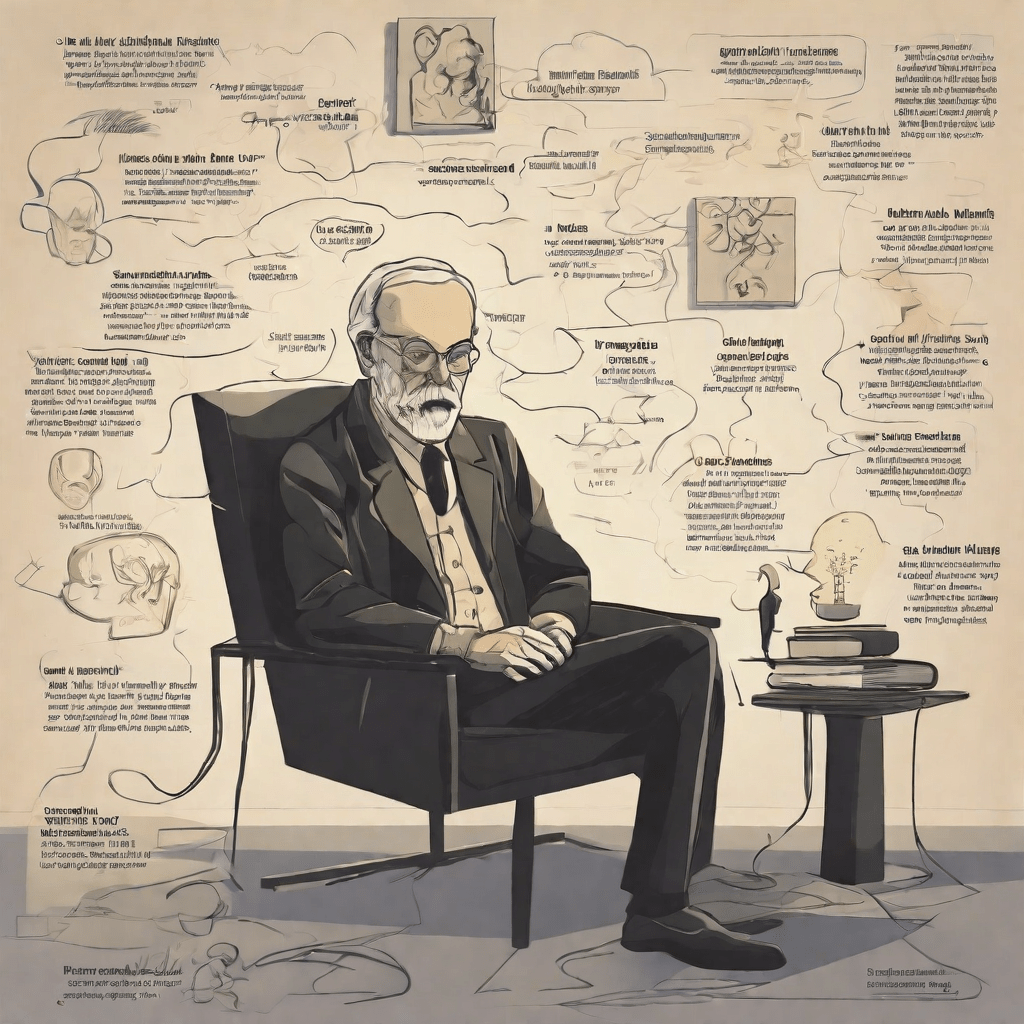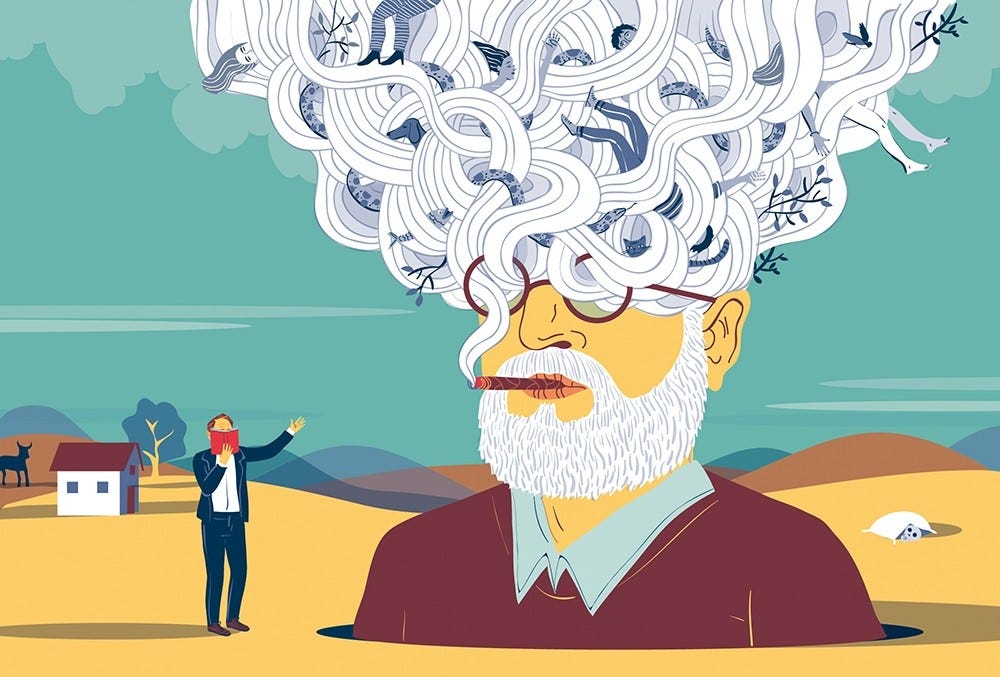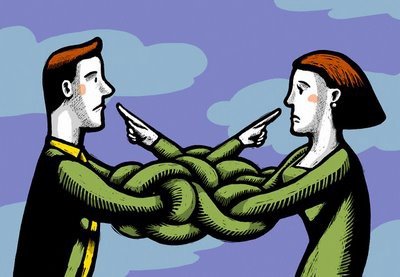What Are Three Psychoanalytic Techniques Used In Therapy?

Psychoanalytic therapy, a significant pillar in the vast field of psychology, dives deep into the human mind and its intricate mysteries.
Originating from the groundbreaking works of Sigmund Freud, the therapy focuses on unveiling the layers of unconscious thoughts and motivations that influence a person’s present behavior.
In essence, it uses various psychoanalytic techniques, each one designed to unfold different facets of the unconscious mind.
Interestingly, though these techniques may range in approach and methodology, they all share a common aim: to offer valuable insights into a person’s psyche and foster profound personal growth and understanding.
From the days of Freud and his disciples till now, psychoanalytic therapy has maintained its distinguished status in the world of psychology.
It’s a unique field that combines theory, practice, and research, making it dynamic and ever-evolving.
But what sets psychoanalytic therapy apart from other psychological practices is its unwavering emphasis on the unconscious mind.
This fundamental belief that our unconscious holds the answers to our behaviors is what forms its core.
But how does psychoanalytic therapy access this unconscious reservoir of thoughts?
The answer lies in the different psychoanalytic techniques that have been developed over the years.
Each technique adds another piece to the puzzle that is the human unconscious mind, making the picture clearer for the therapist and the individual undergoing therapy.
Methods such as the Freudian Analysis Method, Adlerian Psychotherapy Techniques, and Jungian Analysis Methods open up different windows into the unconscious, aiding the person in understanding their own thought process and behavioral patterns.
Why should we explore these psychoanalytic techniques?
Psychoanalytical techniques offer a deep dive into the world of the unconscious, revealing patterns, motivations, and beliefs too subtle or ingrained for us to notice consciously.
They offer people an opportunity to reclaim control of their lives, to make sense of their behaviors, and to facilitate healing and growth.
They can also train mental health professionals to recognize and work with unconscious influences, enhancing their ability to provide help and guidance to their clients.
Hence, examining these techniques not only enriches individual understanding but also contributes to the larger field of human understanding.
Free Association

Free Association is a cornerstone in the pantheon of psychoanalytic techniques, credited with bridging the conscious and unconscious mind’s chasm.
Explaining what Free association entails in psychoanalysis
The theory of Free Association originated from the extensive work of Sigmund Freud.
Historically, Freud recognized that the trickling flow of thoughts, no matter how trivial or disjointed, when expressed freely, could unlock highly suppressed emotions and memories.
This technique focuses on the patient narrating their thoughts, feelings or memories without any censorship, thereby revealing unconscious processes.
The role of Free Association in psychoanalysis is transformative.
It aims to unearth repressed memories or traumas that are the core sources of various mental ailments like depression, anxiety, and certain types of neurosis.
By encouraging a stream-of-consciousness form of dialog, it helps to problematize the person’s psyche.
In practice, case studies involving Free Association have demonstrated its effectiveness.
For instance, patients experiencing recurring dreams might be asked to freely associate their thoughts, feelings, and recollections to the dream’s symbolic elements.
The therapist then interprets these associations to provide insights into the unconscious motivations driving the dreams.
Explore the strengths and weaknesses of Free Association
Evaluating the effectiveness of Free Association, one cannot deny its profound impact in unravelling the enigma of the subconscious mind.
It fosters an environment of openness where the patient could feel safe to articulate thoughts without the fear of judgment, thereby enabling the exploration of a wider range of emotions and memories.
Nevertheless, like any therapeutic technique, Free Association has its potential drawbacks and criticisms.
While it can offer impactful insights for some, it might not be equally effective or suitable for all individuals.
Some criticisms highlight the over-emphasis on past experiences and possible overinterpretation of associations. Some patients may also struggle with the completely ‘free’ aspect, finding it difficult to openly share without any structured guidelines.
A common misconception about Free Association is that it functions solely to dredge up ‘repressed memories.’
While it does aim to uncover suppressed past experiences, its primary goal is to build a bridge between conscious and unconscious thoughts to address present concerns and issues.
Demonstrate how Free Association is used in a therapy session
Implementing Free Association in a therapy session begins by creating a safe, judgement-free atmosphere.
The patient is encouraged to say whatever comes to mind, no matter how mundane, embarrassing, or peculiar. This might range from thoughts, memories, emotions, or even physical sensations.
The therapist’s role during Free Association is primarily passive yet observant. They neither guide the patient’s thoughts nor impose their interpretation.
Their primary goal is to listen attentively, discern patterns and latent meanings, and provide insightful feedback.
The objective is not to force a narrative but to facilitate the organic emergence of unconscious thoughts into conscious awareness.
In conclusion, Free Association underscores the belief that everyone has an intrinsic capacity for self-healing and personal growth.
By facilitating access to the unconscious, it helps individuals understand their experiences and emotions better and draw substantive insights about their lives.
Although it may not be the silver bullet for all mental health concerns, its contributions to the field of psychoanalysis and individual therapy sessions are undeniable.
Dream Interpretation

Dream Interpretation is a pillar in psychoanalytic therapy strategies, bringing forth the unconscious mind’s narratives through the language of dreams.
Clarifying the role of Dream Interpretation in psychoanalysis
Dream Interpretation traces its roots back to Sigmund Freud. He revolutionized psychoanalysis by implying that dreams are the “royal road to the unconscious.”
By decoding the symbolism and emotional substratum of dreams, Freud discovered a gateway into the unconscious psyche’s deep trenches.
The principles and theories behind Dream Interpretation lean heavily upon Freudian Analysis Methods.
Freud hypothesized that dreams are wish fulfillments, typically originating from repressed desires and unresolved conflict.
These are often masked within the dream’s manifest content (the literal events), but reveal themselves in the dream’s latent content (the symbolic meaning).
Moving past theory, instances where Dream Interpretation was utilized are plentiful.
For example, in cases where patients consistently wake up anxious or startled, Dream Interpretation is leveraged to uncover the repressed fears, anxieties or hopes, providing them with insight into their emotional distress and aiding in their emotional regulation.
Analyzing the advantages and limitations of Dream Interpretation
Assessing the impact and value of Dream Interpretation in psychoanalysis, it largely serves as an empathetic and insightful tool for therapists.
By interpreting the language of dreams, therapists gain valuable insights into the patient’s unconscious desires, fears, or conflicts.
This not only intensifies the therapeutic alliance but also heightens self-understanding for the individual being assessed.
Despite these benefits, Dream Interpretation is not impervious to criticisms and potential pitfalls.
The most common critique questions the subjectivity and potential for over-interpretation, as dreams can be multi-dimensional and multi-faceted.
Critics argue that the interpretation might reflect more of the therapist’s perspectives rather than the dreamer’s unconscious processes.
A common misunderstanding about Dream Interpretation is that every dream element has a fixed, universal symbolism.
On the contrary, individualized Dream Interpretation emphasizes the personal significance of each dream element to the dreamer, rather than relying on fixed symbols.
Illustrating the use of Dream Interpretation in psychoanalytic therapy
The use of Dream Interpretation in psychoanalytic therapy is a structured yet flexible process.
The patient is encouraged to recall and describe their dream to the best of their ability. Then, they freely associate their thoughts and feelings with each dream element.
The therapist’s role during Dream Interpretation is pivotal.
Equipped with their knowledge of various Psychoanalytic Therapy Strategies, they guide the associational process.
They offer loose interpretations for the patient to consider, ensuring the interpretations resonate at a personal level. The goal is not to dictate meanings but to stimulate reflections, bringing latent content to the surface.
In conclusion, Dream Interpretation stands as an ingenious technique within psychoanalytic therapy.
By giving voice to silenced, unconscious elements, it supports individuals’ self-understanding and catalyzes healing — a testament to the art and science of psychoanalysis.
Transference Analysis

Transference Analysis holds a pivotal place in psychoanalysis. Its strategic importance lies in the inevitable emotional dynamics that arise in the course of any psychoanalytic work.
Underpinning the concept of Transference Analysis in psychoanalysis
Transference Analysis, owing its conception to the works of Sigmund Freud, forms the bedrock of most psychoanalytic therapeutic relationships.
Freud discovered that patients tended to project their feelings, usually rooted in early relationships, onto the therapist.
These projections, often subconscious, create a ‘transference’ phenomenon, thereby laying the groundwork for Transference Analysis.
The supporting theories behind Transference Analysis draw largely from Freudian and Adlerian psychotherapy techniques.
The theory suggests that we all carry forward experiences from our formative years into adulthood.
When these are triggered in the present, they can unconsciously influence emotional responses and behaviors – a mechanism that comes into sharp focus in the therapeutic setting.
Transference Analysis is routinely applied in clinical practice. For instance, a patient who felt neglected in childhood might perceive their therapist’s brief moment of inattention as a repetition of parental neglect.
Analyzing this transference can offer deep-rooted insights into where these feelings emanate from, and how they impact the individual’s relationships and self-perceptions.
Delineating the pros and cons of Transference Analysis
Delving into the merits of Transference Analysis in therapy, it provides a live window into the patient’s unconscious repertoire of emotions, experiences, and relations.
It aids in highlighting patterns of relating that could be unproductive or disruptive, enabling a process of understanding, and ultimately, resolution and healing.
However, the technique does face its share of criticisms and possible limitations. The most common drawback of Transference Analysis is that it has the potential to evoke heightened emotions.
It can sometimes lead to significant turmoil and distress in patients, especially in the initial stages.
Besides, the extreme focus on past altered experiences may risk downplaying the significance of present conditions or circumstances in the patient’s life.
A circulating misconception about Transference Analysis is that it is merely a re-enactment of the past.
However, analysts argue that it is not strictly about re-living past experiences. It functions to illuminate these past emotional blueprints and their bearings on the present, intending to transform them positively.
Explaining the application of Transference Analysis in therapy
The execution of Transference Analysis in a therapy session involves attentive recognition and delicate handling of transferential elements that emerge during conversations.
The minute details, even a passing comment about the therapist, could prove significant and become key to understanding the patient’s emotional world.
The therapist’s role during Transference Analysis is integral. They need to maintain a consistently non-judgmental, receptive stance, emphasizing empathy and understanding.
While the occurrence of transference is a natural process, the analysis part requires professional expertise to discern real relationship elements from transferred issues.
Importantly, the therapist carries the responsibility of returning the projections in a gentler, more insightful form to the patient, thereby promoting self-awareness and personal growth.
In conclusion, Transference Analysis is an essential and transformative technique in psychoanalytic therapy.
It stands as a testament to the depth of human emotion and relation, enabling individuals to glean deep insights about their past experiences, repeats patterns, and perspectives.
The path to self-discovery and personal growth might not be without challenges, but understanding one’s transferences can prove instrumental in fostering healthier bonds, resolving internal conflicts, and achieving emotional well-being.
Looking Beyond: Psychoanalytic Techniques and Future Directions
In gauging the importance and role of psychoanalytic techniques in therapy, their relevance is obvious.
Techniques such as Free Association, Dream Interpretation, and Transference Analysis not only offer a path towards understanding the unconscious mind’s complexities but also provide a practical approach to tackling a spectrum of mental health concerns.
They allow us to embark on a journey into the unknown yet integral landscapes of our subconscious, exploring emotional patterns and relational dynamics that have profound influences on our present lives.
Indeed, it is through these methods that the somewhat elusive concept of the ‘unconscious mind’ becomes tangible and accessible.
We can untangle the threads of our past experiences and their enduring impact on our present behaviors, emotions, and relationships, enabling us to acknowledge, comprehend, and change.
Be it through the Freudian lens of dream analysis or the complex dynamics of transference, we are offered opportunities to experience a profound sense of clarity and emotional growth.
Moreover, these techniques ripple into the therapeutic alliance, strengthening the client-therapist connection through shared exploration and mutual understanding.
They underline a core element of psychoanalysis: strategy. The therapist does not merely observe the presenting issues but strategically aims for the unconscious roots that foster healing and transformation.
Thus, they are not just tools for introspection and insight but also for therapeutic change.
However, understanding these psychoanalytic techniques and their applications should be an ongoing quest.
Every unraveling, every insight, and every therapeutic intervention adds to the vast reservoir of psychoanalytic understanding.
As we delve deeper into the unconscious mind and its manifestations, we continue to refine these techniques, making them more targeted and effective.
So, while we have shed light on just three therapeutic techniques employed in psychoanalysis – Free Association, Dream Interpretation, and Transference Analysis – the exploration doesn’t end here. Psychoanalysis, steeped as it is in nuance, rhythm, and depth, is an expansive field, and the range of techniques it employs mirrors its complexity.
Continuing to explore and understand them – their nuances, their potentials, and their limitations – is keenly valuable.
After all, these explorations and advances don’t just drive the field of psychoanalysis forward – they also profoundly impact individual lives, fostering personal growth, emotional wellness, and truly transformative change.
